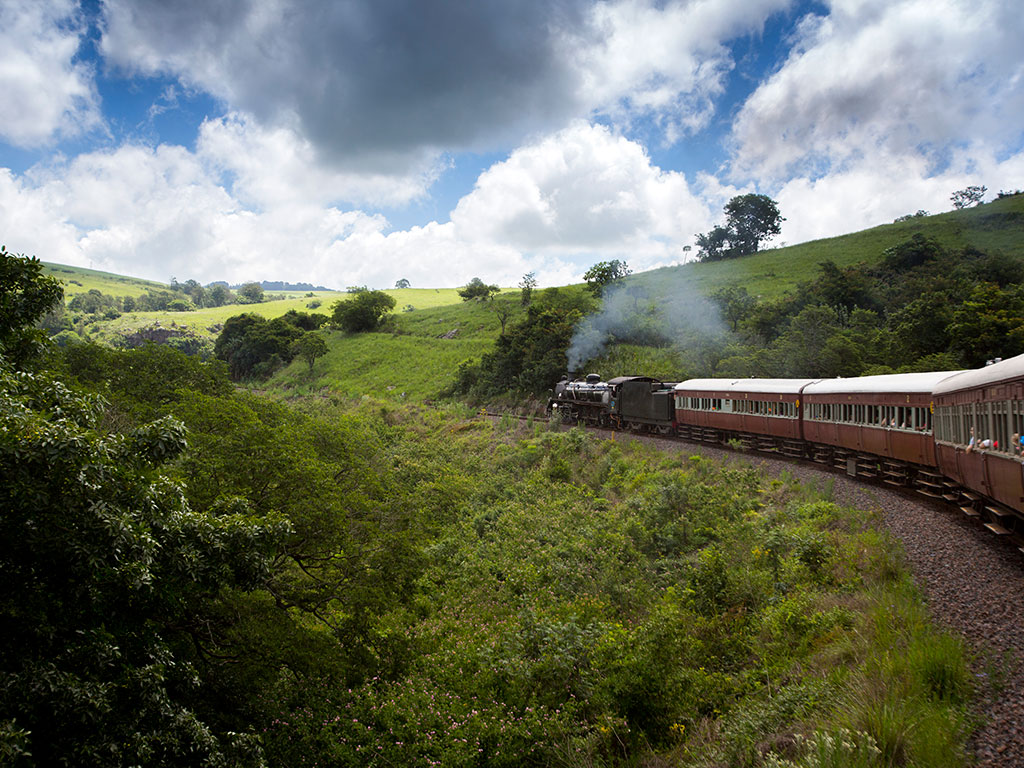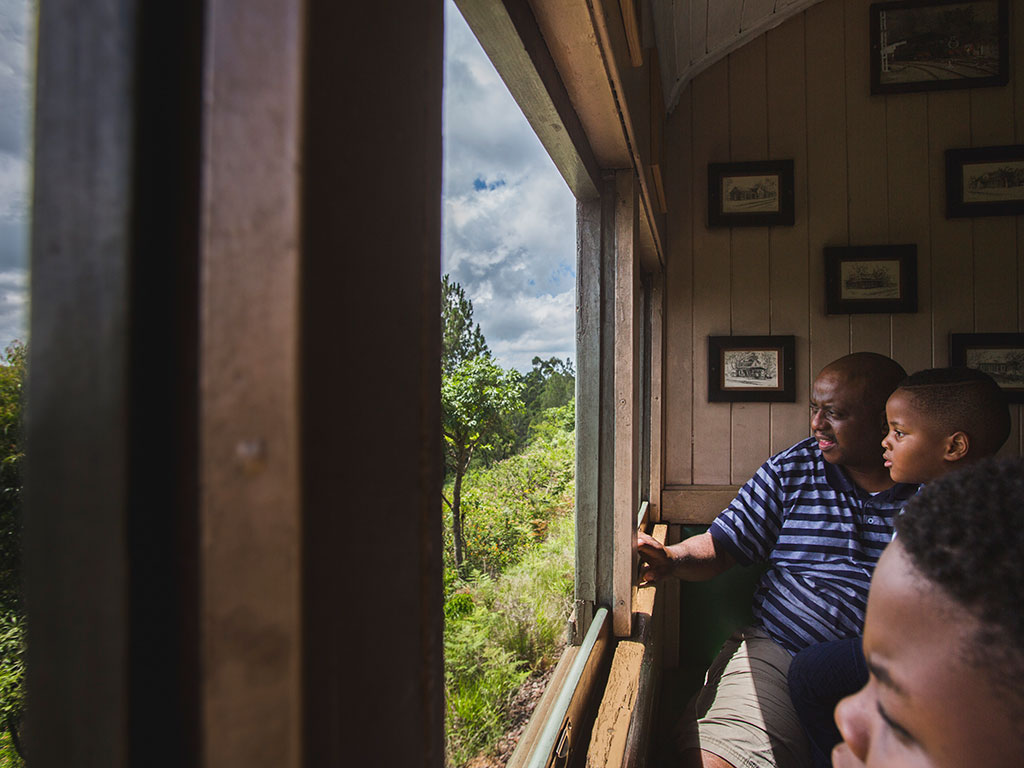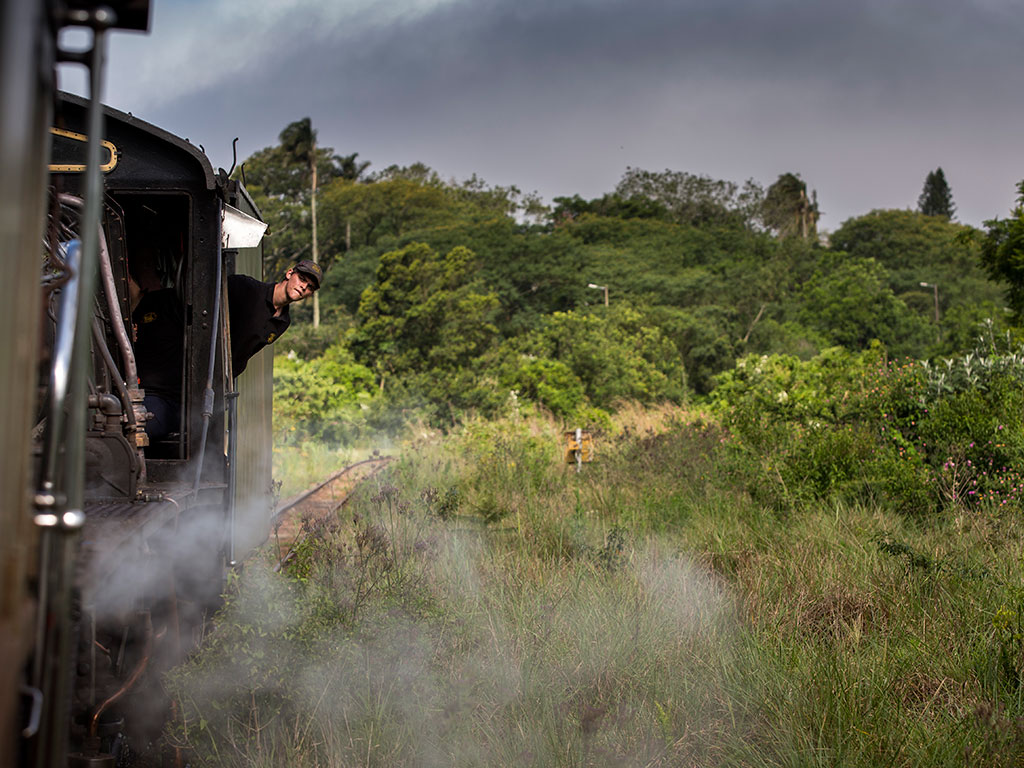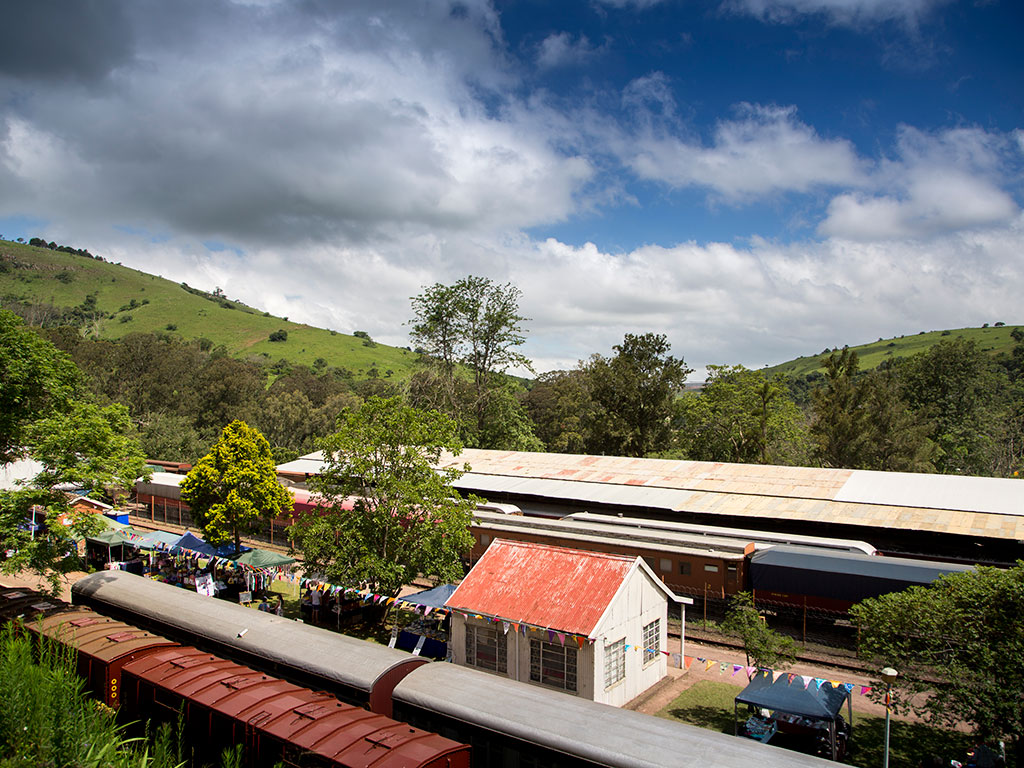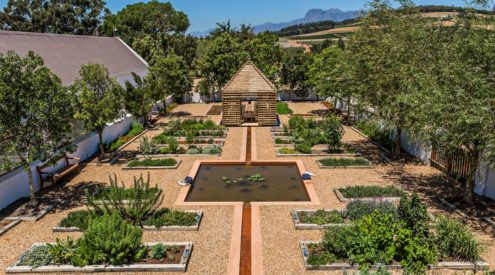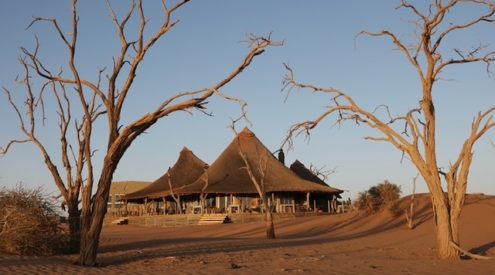Teagan Cunniffe enjoys a nostalgic ride on an 80-year-old steam train.
The brass bell rings, signalling the five minute call for the train to depart. I’m sitting right at the back – or the front, depending on which direction Wesley, the 1938 Berlin-built locomotive, is running.

Youngsters in blue overalls work as volunteers for Umgeni Steam Railway. Image credit: Teagan Cunniffe
Boys in blue overalls, mostly not yet teens, avoid the stairs in their haste to embark. Grit sits under their fingernails, coal marks stain their knees and their faces are split wide with grins. They’re volunteers for Umgeni Steam Railway, helping to keep history running.
Hands wave us farewell as the train pulls off in a cloud of billowing steam and we push past the Stoker’s Arms pub. The train sounds like a dog panting and the horn shrieks like a bird of prey.
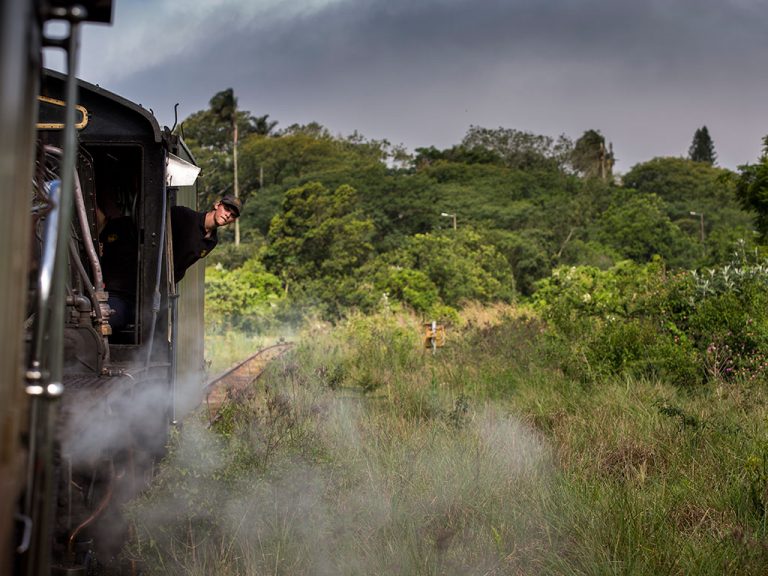
One round-trip of the steam engine takes about two tons of coal – all loaded by hand – and 15 000 litres of water. Image credit: Teagan Cunniffe
The young family behind me chatter away amid the clamour, the kids holding multicoloured spinning pinwheels out of the window (these toys are sold on the train, a nostalgic throwback).
‘I’ve been part of Umgeni Steam Railway for seven years,’ coach marshal Cyanne Courtney says. ‘I started when I was 16. It’s all volunteer-based; no one here is paid. We do it because we love it and want to keep the train journey alive.’
Specks of coal flit through the window and land on my arm as we whisk past old train stations, left abandoned to the weeds. After about an hour, we disembark at Inchanga Station.

Craft market at the Inchanga station. Image credit: Teagan Cunniffe
Market stalls have been set up for the train passengers, with toys, clothes, food, delicious iced coffee (I can vouch for that) and books for sale.
I cross the tracks, pass little girls cooing over ponies and head up towards the Station Master’s House, now a museum.
‘This whole area is a living museum, not just the house itself,’ says the curator, Heather Main, who assists visitors.
‘Train travel used to be the safest form of transport. The line from Durban to Maritzburg was built – by hand – in only two years! You should go have a look at the other trains in the station workshop.’
There are 10 locomotives and 50 coaches lined up in the dark shed, all in various states of repair. It’s hard getting parts for these engines, some of which are more than 120 years old.
Preparing for the return leg, men, boys and one seven-year-old girl trim the coal, making sure it’s easily reachable by the ‘fireman’ to shovel into Wesley’s furnace.
One round-trip of the steam engine takes about two tons of coal – all loaded by hand – and 15 000 litres of water. It’s a monumental effort that the volunteers dive into cheerfully, jokes and banter passing within the close-knit team. Most of them were once passengers on this very train, and have been hooked ever since.

A family watches the landscape as it whips by. Image credit: Teagan Cunniffe
The five-minute bell rings and once more we lurch into motion. The family behind me sits contentedly, watching the landscape blur. Cell phones hang out windows, capturing pictures and videos.
We sidle up to our final stop, step off and through the crowds milling about on the platform. They’re here for the afternoon trip: grandparents and children, friends and couples, all ages and races. All excited to experience a slice of history. And the volunteers are there, smiling and ready to take to the tracks once more.
Highlights
• Visit the Station Master’s House (now a museum), built in 1894. It’s set on a small hill overlooking Inchanga Station (1895) and has a sizeable collection, including photos of the old viaduct (now dismantled) that stretched over the Sterkspruit Valley. The viaduct used to sway so much in bad weather that passengers were instructed to disembark and walk in front of the train.
• Pack a picnic blanket and food (or buy at the market) and set up in the lush, shaded grass below the museum. Music wafts up the hill and views look out over the valley beyond the train tracks.

Visit the Station Master’s House (now a museum), built in 1894. Image credit: Teagan Cunniffe
Getting there
The train departs promptly from Stoker’s Arms in Kloof at 8.30am and 12.30pm on the last Sunday of every month, with additional trips during the school holidays and festive season. Arrive at least half an hour early to board, and bring cash to purchase refreshments on the train.
About the trip
Leaving behind Stoker’s Arms, you pass through Kloof and Hillcrest before rounding Botha’s Hill to expansive views of the Valley of 1000 Hills and stopping at the Inchanga Craft Market. The morning train takes three hours, the afternoon train half an hour longer. It costs R240 adults, R170 children. Booking essential. umgenisteamrailway.com
This story appears in the March 2018 issue of Getaway magazine.
Our March issue features three magical train journeys, how to plan your escape on a dhow safari around Bazaruto, where to eat delicious fare when you have only 36 hours in Mumbai, plus lots more.










